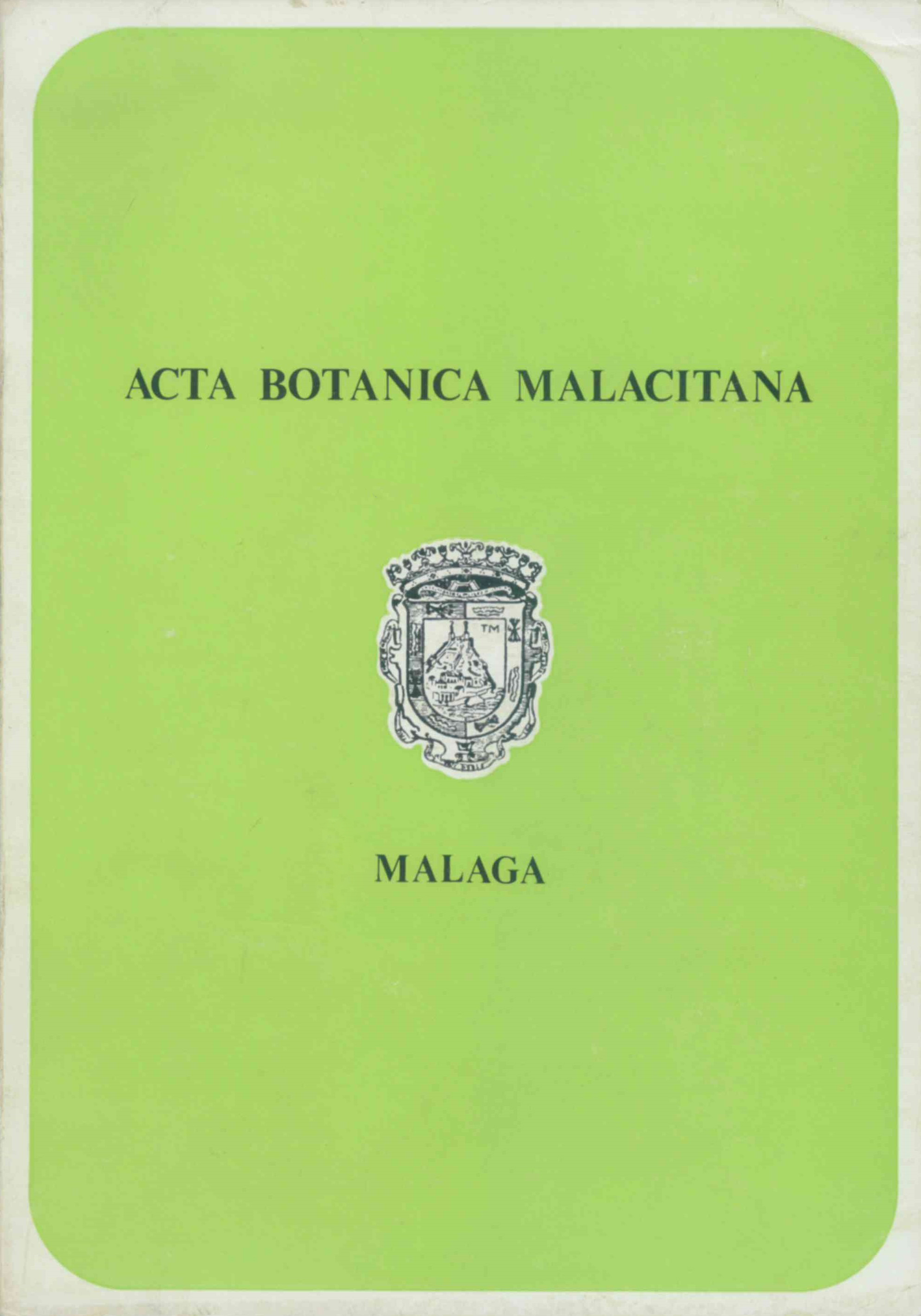Data on the Spanish nitrophilous vegetation
DOI:
https://doi.org/10.24310/Actabotanicaabmabm.v3i.9697Keywords:
.Abstract
In this paper we discuss the concept and range of the different ruderalis and nitrophilous classes related to the Chenopodio-Scleranthea division which exist in the peninsularSpain. We accept nine classes of vegetation pointing out their lecto- syntypus until the alliance range: Stellarietea mediae, Artemisietea valgaris, Bidentetea tripartiti. Cakiletea maritimae, Epilobietea angustifolii, Pegano- Salsoletea vermiculatae, Onopordetea acantho-nervosi, Polzigono-Poetea annuae and Frankenietea pulverulentae. The Secalietea class, in case it would be accepted can also be included.
Downloads
Metrics
References
BARKMAN, J. J., MORAVEC, J. & RAUSCHERT, S. (1976). Code of phytosociological nomenclature. Vegetatio, 32(3), 131-185.
BOLOS, O. (1962). El paisaje vegetal barcelonés. Universidad de Barcelona, 1-193. Barcelona.
BOLOS, O. (1967). Comunidades vegetales de las comarcas próximas al litoral situadas entre los ríos Llobregat y Segura. Memorias de la Real Academia de Ciencias y Artes, 38(1), 3-280. Barcelona.
BOLOS, O. (1968). Tabula Vegetationis Europae Occidentalis. Acta Geobotanica Barcinonensia, 3, 5-8. Barcelona.
BRAUN-BLANQUET, J., ROUSSINE, N. & NÈGRE, R. (1952). Les groupements végétaux de la France méditerranéenne. Centre National de Recherche Scientifique, Service de la Carte des Groupements Végétaux. Montpellier.
ESTEVE, F. (1973). Vegetación y flora de las regiones central y meridional de la provincia de Murcia. Centro de Edafología Aplicada del Segura. Murcia.
GÉHU, J. M. (1973). Unités taxonomiques et végétation potentielle naturelle du Nord de la France. Documents Phytosociologiques, 4, 1-22.
HADAC, E. (1967). On the highest units in the system of plant communities. Folia Geobotanica et Phytotaxonomica, 4, 429-432. Praha.
MAYOR, M. & DÍAZ, T. (1977). Síntesis de la vegetación asturiana. Documents Phytosociologiques, N.S.1, 159-173. Lille.
OBERDORFER, E. (1957). Süddeutsche Pflanzengesellschaften. Pflanzensoziologie, 10, 1-XXVII, 1-564. G. Fischer, Jena.
RIVAS GODAY, S. (1964). Vegetación y flórula de la cuenca extremeña del Guadiana (Vegetación y flórula de la provincia de Badajoz). Publicaciones de la Diputación Provincial de Badajoz, 777 pp. Badajoz (Madrid).
RIVAS GODAY, S. & col. (1955). Aportaciones a la fitosociología hispánica (proyectos de comunidades hispánicas). Anales del Instituto Botánico Cavanilles, 17(2), 335-422. Madrid.
RIVAS GODAY, S. & RIVAS-MARTÍNEZ, S. (1963). Estudio y clasificación de los pastizales españoles. Publicaciones del Ministerio de Agricultura, 277, 1-269. Madrid.
RIVAS-MARTÍNEZ, S. (1975). Mapa de la vegetación de la provincia de Ávila. Anales del Instituto Botánico Cavanilles, 32(2), 1493-1556. Madrid.
RIVAS-MARTÍNEZ, S. & IZCO, J. (1977). Sobre la vegetación terofítica subnitrofila mediterránea (Brometalia rubenti-tectori). Anales del Instituto Botánico Cavanilles, 34(1), 355-381. Madrid.
TÜXEN, R. (1950). Grundriss einer Systematik der nitrophilen Unkrautgesellschaften in der Eurosibirischen Region Europas. Mitteilungen der Floristisch-Soziologischen Arbeitsgemeinschaft, n.f. 2, 94-175. Stolzenau.
TÜXEN, R., OBERDORFER, E. & col. (1958). Eurosiberische Phanerogamengesellschaften Spaniens. Veröffentlichungen des Geobotanischen Instituts Rübel, 32, 1-328. Zürich.
WESTHOFF, V. & DEN HELD, A. J. (1970). Systeem der in Nederland voorkomende plantengemeenschappen, in Flora van Nederland. S. J. van Ooststroom. Groningen.
Downloads
Published
How to Cite
Issue
Section
License
Copyright (c) 2020 Acta Botanica Malacitana

This work is licensed under a Creative Commons Attribution-NonCommercial-ShareAlike 4.0 International License.
All information related to the licensing of published works in Acta Botanica Malacitana and copyright can be found in our Editorial Policy.







1.png)
